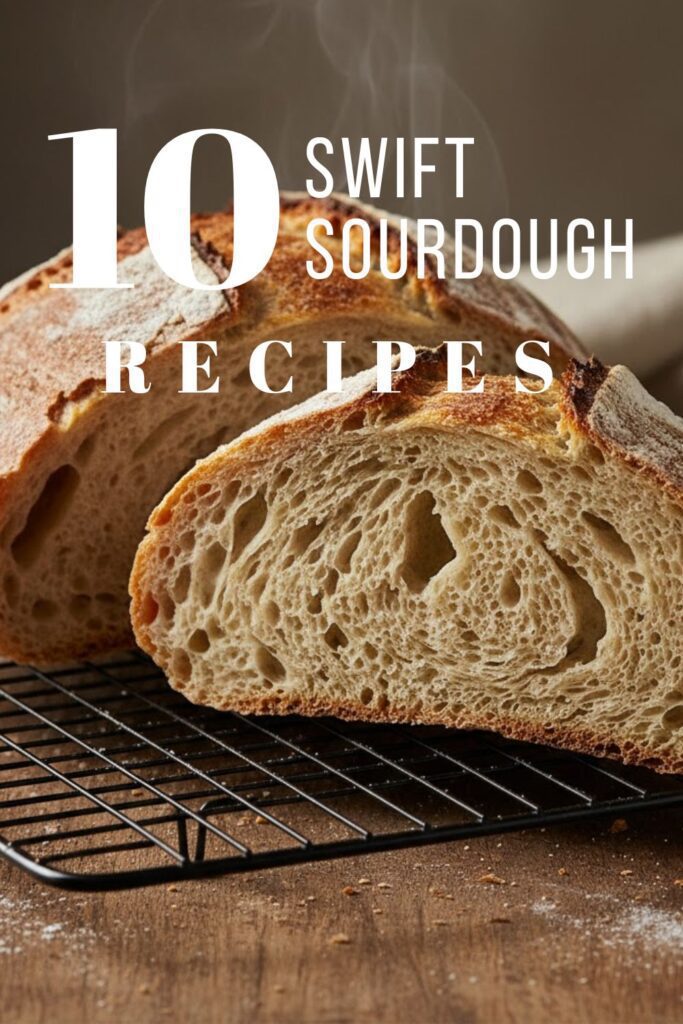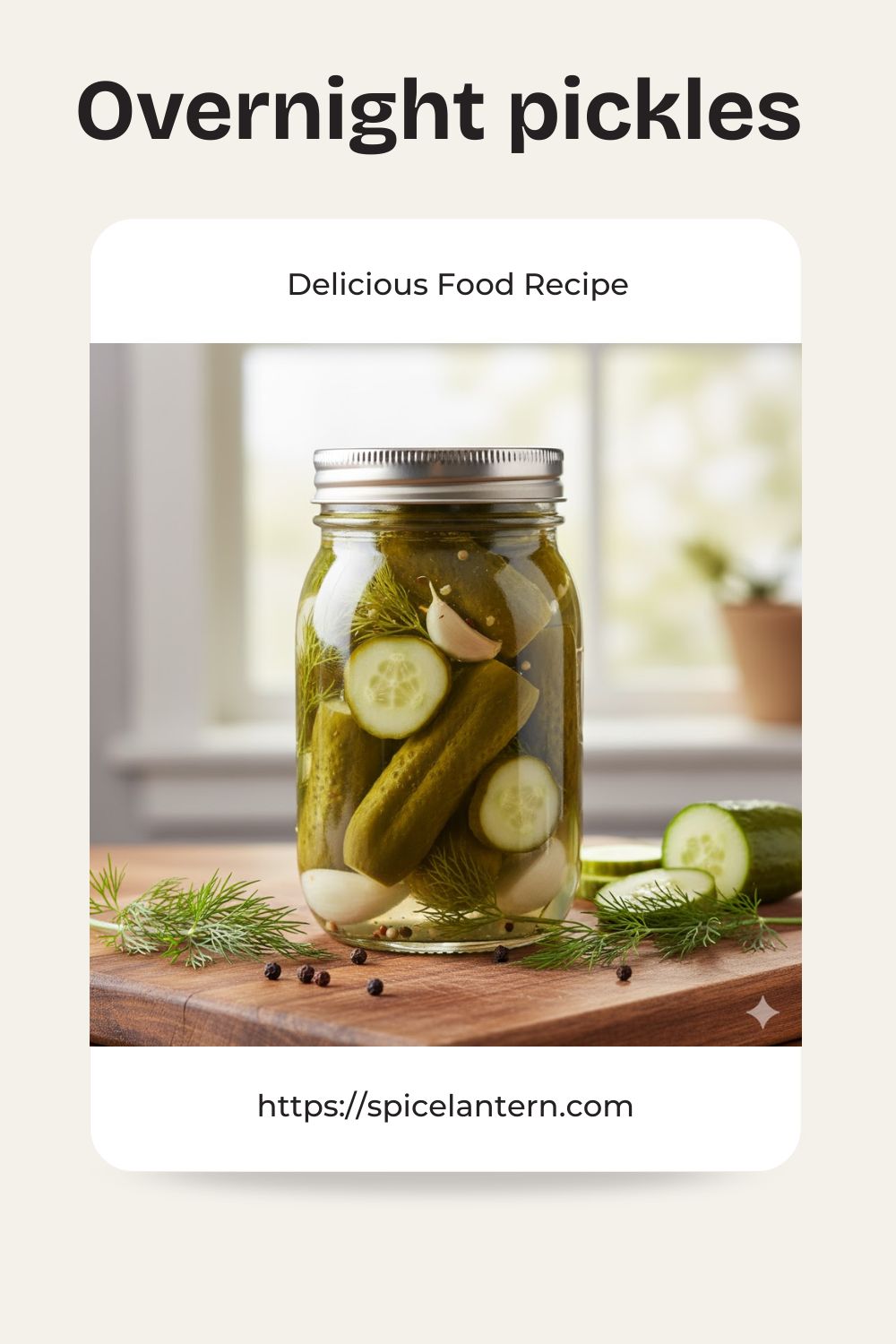Ditch the 24-Hour Wait: Your Cheat Sheet to Swift Sourdough Glory
Let’s cut the artisanal pretense, shall we? You love the tangy taste, the incredible crust, and the bragging rights of homemade sourdough, but who has two days to babysit a loaf? Seriously, I once tried a “traditional” method and ended up staring mournfully at a pale, flat disk when I was supposed to have an Instagram-worthy boule. Never again. We demand the taste without the time commitment, which is why you need this Swift Sourdough recipe. It’s for the baker who wants that tangy, crunchy, open-crumb magic before the weekend is over. No judgment here—we’re all about cutting corners to get to the carbs.
Why This Recipe Is Awesome (And Why Bakers Will Judge Us)
This recipe is a revolutionary act against baking purists. Why is it awesome?
- Speed is King: We use a secret weapon to massively accelerate the bulk fermentation. We’re talking hours, not days, for the first rise. You mix it in the morning, and you’re slicing it for dinner.
- Flavor is NOT Compromised: You still get that signature tangy sourdough flavor because we rely on a strong, active starter and high heat. Your taste buds will be fooled, and frankly, that’s all that matters.
- Crust Goals: We guarantee a deeply caramelized, aggressively crunchy crust that sings when you slice it. Will it impress guests? Absolutely. Will you tell them you cheated? That’s between you and your oven.
Ingredients: The Essentials (No Flour Snobbery Allowed)
Keep it simple. You should already have the starter, or you wouldn’t be here, right?
- 100g Active Sourdough Starter (The ‘Levain’): This is your engine. It must be bubbly and peak-active. If it’s sluggish, feed it and wait. Don’t waste your good flour!
- 350g Warm Water (Around 85-90°F / 29-32°C): Warmth is our accelerator. Don’t use hot water, though—you’ll kill the culture, you monster.
- 500g High-Protein Bread Flour: Bread flour is non-negotiable for gluten development. Don’t try this with All-Purpose unless you enjoy gummy bread.
- 10g Fine Sea Salt: Flavor, strength, and crust color. Don’t be shy with the salt, but don’t overdo it either.
Key Substitutions:
- Bread Flour: In a pinch, mix a few tablespoons of vital wheat gluten into high-quality All-Purpose flour. It helps build structure.
- Water: If your tap water is heavily chlorinated, use filtered or bottled water. Chlorine is the enemy of your happy yeast and bacteria.
- Salt: Use Kosher salt, but weigh it precisely—it measures differently than sea salt.
Tools & Kitchen Gadgets Used: Gear Up, Buttercup!
We love an excuse to use cool equipment, and these tools make the Swift Sourdough process even easier.
- Digital Kitchen Scale: MANDATORY. Baking is science, not volume guessing. Put down the measuring cups. Seriously.
- Large Mixing Bowl: For all the doughy action. Glass or clear plastic helps you see the progress.
- Dough Scraper: Absolute necessity for handling sticky dough and for clean-up.
- Banneton or Proofing Basket (or a bowl lined with a floured cloth): For the final, crucial shaping. Rice flour dusting prevents sticking better than wheat flour.
- Dutch Oven (5-7 Quart Cast Iron): The secret to the perfect oven spring and crust. Do you really want to risk a pale, sad crust?
- Oven Thermometer: To ensure your oven is truly preheated. Ovens lie!
- Lame or Razor Blade: For scoring your loaf dramatically before baking.
- Plastic Shower Cap or Plastic Wrap: For covering your dough during the rise.
Step-by-Step Instructions: The Fast-Track to Tang
Let’s get this bread. Move quickly, but don’t panic. The dough knows what it’s doing (mostly).
Step 1: The Autolyse (20-30 Minutes)
- In your large bowl, combine the warm water and the bread flour. Mix it just until no dry flour remains. It will look shaggy and sad.
- Cover the bowl and let it sit for 20-30 minutes. This is the Autolyse, and it lets the flour fully hydrate and starts the gluten development without the starter or salt getting in the way. Look at you, being all sciencey!
Step 2: Incorporate the Starter and Salt (5 Minutes)
- Add the active sourdough starter and the salt to the dough.
- Gently squeeze and fold the ingredients together in the bowl until everything is fully combined. Use the “pincer” method: pinch and fold the dough repeatedly. The dough will become loose and sloppy. No dry salt or starter chunks allowed!
Step 3: The Swift Bulk Fermentation (3-4 Hours Total)
- Immediate Accelerator: Place your covered bowl in a warm place—a proofer, a turned-off oven with the light on, or a warm spot on top of the fridge. Warmth is our cheat code for speed. We aim for a dough temperature around 78-80°F (25-27°C).
- Stretch and Folds (First 90 Minutes): Over the next 90 minutes, perform 3 sets of stretch and folds (one set every 30 minutes). Lift one side of the dough, stretch it up high, fold it over the center, rotate the bowl 90 degrees, and repeat 3-4 times. This builds structure.
- The Wait (Remaining Time): Let the dough rest undisturbed until it has visibly increased by about 50% in volume and looks puffy, domed, and has bubbles on the surface. This swift bulk fermentation should only take 3-4 hours, max. Do not let it double! Over-fermenting is the fastest way to a flat loaf.
Step 4: Pre-Shape & Rest (20 Minutes)
- Gently turn the dough out onto a lightly floured surface. You need a dusting, not a blanket of flour.
- Gently shape the dough into a loose round (a pre-shape). Let it rest, uncovered, for 20 minutes. This allows the dough to relax before the final shape.
Step 5: Final Shape & Cold Rest (1-3 Hours)
- Perform your final shaping. Create a tight ball that holds its shape well. Watch a video if you’re not sure—tension is key!
- Place the dough, seam-side up, into your rice-floured banneton.
- Cover it tightly with plastic wrap or a shower cap.
- Here’s the second speed hack: Place it in the freezer for 30 minutes, then move it to the fridge for 1-2 hours (or longer, if you must). This firms the dough quickly, making it easy to score, and slows the yeast enough to prevent over-proofing before the bake. TBH, this is cheating, but it works.
Step 6: Bake the Bread (50 Minutes)
- Preheat your oven to 500°F (260°C) with the Dutch oven inside for at least 45 minutes to get screaming hot. Seriously, turn the oven on when you start the final shape.
- Carefully remove the Dutch oven and invert the dough from the banneton onto a piece of parchment paper.
- Score the top dramatically with your razor blade. Show that dough who’s boss.
- Drop the parchment paper and dough into the Dutch oven, place the lid on, and bake at 500°F (260°C) for 20 minutes. The lid traps the steam for the best rise.
- Reduce the temperature to 450°F (230°C), remove the lid, and bake for another 25-30 minutes until the crust is deep amber brown. Don’t pull it too early! Dark crust means flavor.
Step 7: The Unbearable Wait (2 Hours)
- Remove the loaf from the oven and Dutch oven, and place it on a wire rack.
- Listen to it crackle—that’s the sound of success.
- DO NOT CUT IT FOR AT LEAST TWO HOURS. Slicing it while hot releases steam and gives you a gummy crumb. Resist the urge! Your patience is your final test.
Calories & Nutritional Info: The Tangy Deets (Estimated)
You deserve to know what deliciousness you just created.
- Calories per serving (1/10th of the loaf): ~170-190 calories
- Carbohydrates: ~35-40g
- Protein: ~6-8g (Thanks, bread flour!)
- Fat: <1g
- Fiber: ~2g
Nutritional Notes:
- Lower Glycemic Index: The long, albeit accelerated, fermentation of sourdough can make the bread easier to digest and gives it a lower glycemic index than quick-rise bread. Smart carbs!
- Improved Digestibility: The sourdough process breaks down starches and phytic acid, potentially making the nutrients more available and the bread kinder to sensitive tummies.
Common Mistakes to Avoid: Don’t Be That Baker
We all mess up. But here are the big, dumb ones you must side-step.
- Weak Starter Syndrome: Using a starter that hasn’t doubled and peaked in the last 4-6 hours leads to a flat, dense loaf. Feed your starter and wait! A sleepy starter makes sleepy bread.
- Temperature Ignorance: Sourdough thrives on warmth, especially in a swift recipe. A cold room kills your speed advantage. Find a warm spot or use a proofing box.
- Over-Bulk Fermenting: The biggest mistake! You only want a 50% rise during bulk. If it doubles, you’ve gone too far and sacrificed your oven spring. Watch the volume, not the clock.
- Cutting Too Soon: Seriously, did you read Step 7? If you slice a hot loaf, you ruin the internal structure and make it gummy. Wait the full two hours. No exceptions.
- Dutch Oven Neglect: If your Dutch oven isn’t blazing hot (500°F) when the dough goes in, you lose that initial burst of steam and heat that gives you the legendary oven spring. Preheat it long enough.
Variations & Customizations: Sourdough, But Extra
Got the basic loaf down? Time to get fancy.
- Cranberry Walnut Crunch: At the beginning of the bulk fermentation, fold in ½ cup dried cranberries and ½ cup toasted, chopped walnuts. Soak the cranberries beforehand to prevent them from stealing moisture from your dough.
- Everything Bagel Bomb: During the final shaping, spray the top of your loaf with a little water and roll it in a liberal coating of Everything Bagel Seasoning. Be warned: your kitchen will smell divine.
- Cheesy Jalapeño Inferno: Fold in 1 cup of shredded sharp cheddar cheese and 1/4 cup of finely diced pickled jalapeños during the second set of stretch and folds. The tang from the sourdough is incredible with the heat and cheese.
FAQ Section: Sourdough Secrets Revealed
You’ve got questions about this mythical bread. Let’s tackle them.
Q1: Why use a Dutch oven?
A: A Dutch oven traps the steam released by the dough during the first part of the bake. This steam keeps the crust soft, allowing the loaf to expand maximally (oven spring) before the crust sets.
Q2: What’s the difference between an Autolyse and a Bulk Fermentation?
A: Autolyse is the initial rest period (flour and water only) that hydrates the flour and begins gluten development. Bulk Fermentation (Bulk Ferment) is the long, main rise after you add the starter and salt, where the yeast and bacteria work to flavor the dough and create volume.
Q3: How do I get an open crumb (big holes)?
A: The open crumb requires a few things: high-protein flour, proper gluten development (through stretch and folds), correct bulk fermentation (don’t over-proof!), and a hot oven/Dutch oven for maximum oven spring.
Q4: Why is my sourdough so dense?
A: Density usually comes from two main mistakes: a weak, under-active starter that can’t lift the dough, or under-developed gluten (you didn’t knead/stretch and fold enough). Also, watch out for over-proofing in the bulk ferment!
Q5: Can I use whole wheat flour in this recipe?
A: Yes, but substitute no more than 100g of the bread flour with whole wheat or rye flour. Whole grain flours absorb more water and are notoriously hard on the gluten structure. You might need an extra splash of water.
Q6: My dough is too sticky. What did I do wrong?
A: You probably need to measure by weight instead of volume. Also, stickiness is normal! A great sourdough dough is wet. Use a dough scraper and a light dusting of flour on your hands and work surface, not a flood of flour.
Q7: How long can I keep the finished sourdough bread?
A: Store your baked sourdough cut-side down on a cutting board or in a paper bag at room temperature for about 3-4 days. For longer storage, slice the cooled loaf and freeze it in an airtight bag for up to 3 months. Toasted sourdough is the best!
Final Thoughts: You Are Now a Bread Wizard
Congratulations! You just pulled off the impossible: a delicious, tangy Swift Sourdough loaf without dedicating your entire day to it. Your friends will ask for your secret, and you can give them a vague, knowing look. You conquered the time barrier, and now you have the crust to prove it. Go slather that beautiful, chewy, crusty loaf with butter. You’ve earned it.







